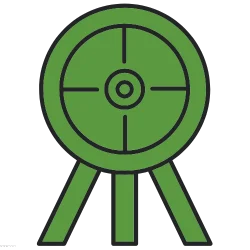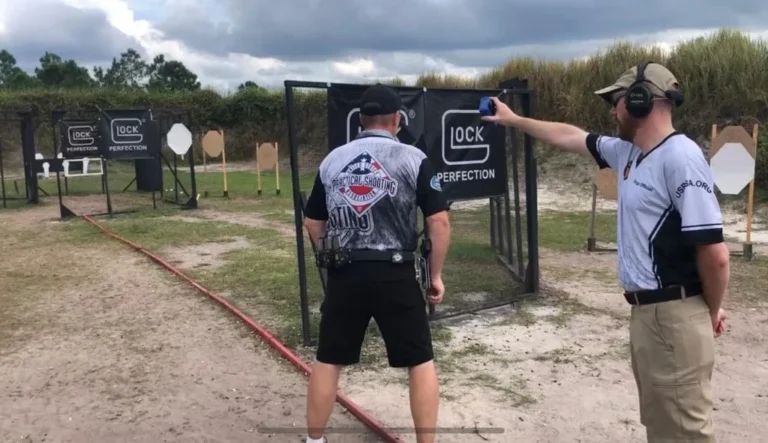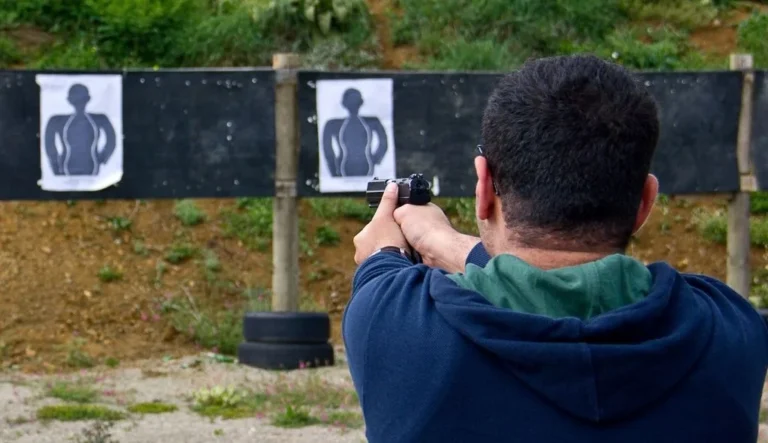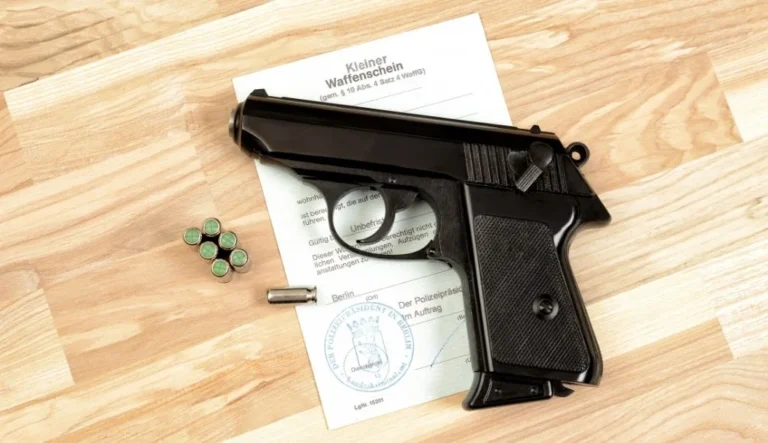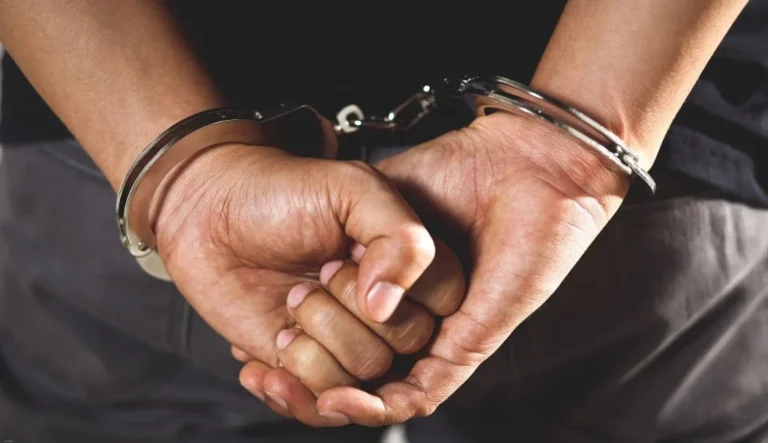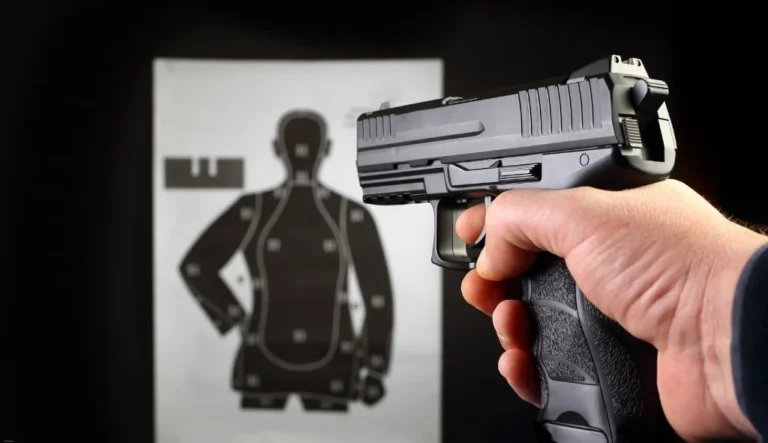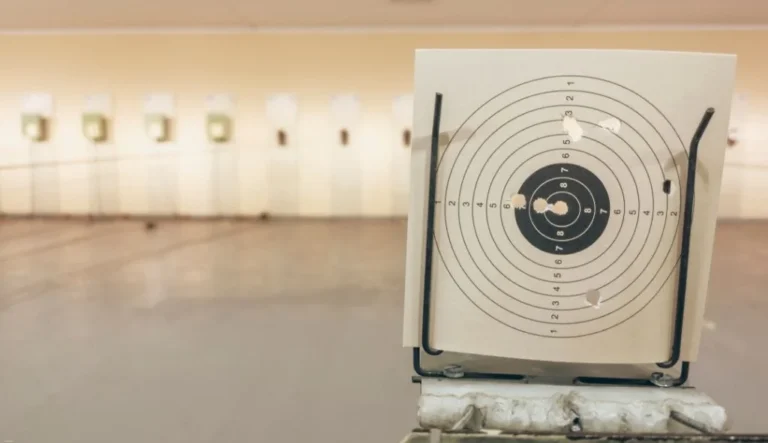When visiting a shooting range, wear closed-toe shoes, long pants, a high-necked shirt with long sleeves, eye and ear protection, and a hat. These items protect you from hot brass and ensure safety and comfort during your shooting session.
Essential Clothing for Shooting Range Safety
Footwear
Closed-toe shoes are a must when visiting a shooting range. Sneakers, boots, or any sturdy shoes that cover your entire foot are ideal. This protects your feet from hot brass casings that may fall to the ground. Avoid sandals, flip-flops, or any open-toed footwear, as these leave your feet exposed to potential burns or injuries.
Pants
Long pants are essential for leg protection at the range. Jeans, cargo pants, or tactical pants are all good options. They shield your legs from hot brass and provide an extra layer of safety. If you plan to shoot from a prone position, long pants are even more important. While shorts might be tempting in hot weather, they leave your legs vulnerable to burns from ejected casings.
Upper Body Clothing
A high-necked shirt with long sleeves is the best choice for upper body protection. This style of shirt prevents hot brass from falling inside your collar or burning your arms. T-shirts, collared shirts, or purpose-designed range shirts all work well, as long as they have a high neckline and long sleeves. Avoid low-cut tops, tank tops, or shirts with wide necks that might allow brass to enter.
Eye and Ear Protection
Eye and ear protection are non-negotiable at any shooting range. Safety glasses or shooting goggles shield your eyes from debris, while ear muffs or ear plugs protect your hearing from the loud reports of firearms. Many ranges provide rental equipment, but bringing your own ensures a perfect fit and consistent protection.
Headwear
A hat, particularly one with a brim, is a useful addition to your range attire. It helps keep brass from falling on your head or face and provides shade when shooting outdoors. A baseball cap or similar style works well for this purpose.
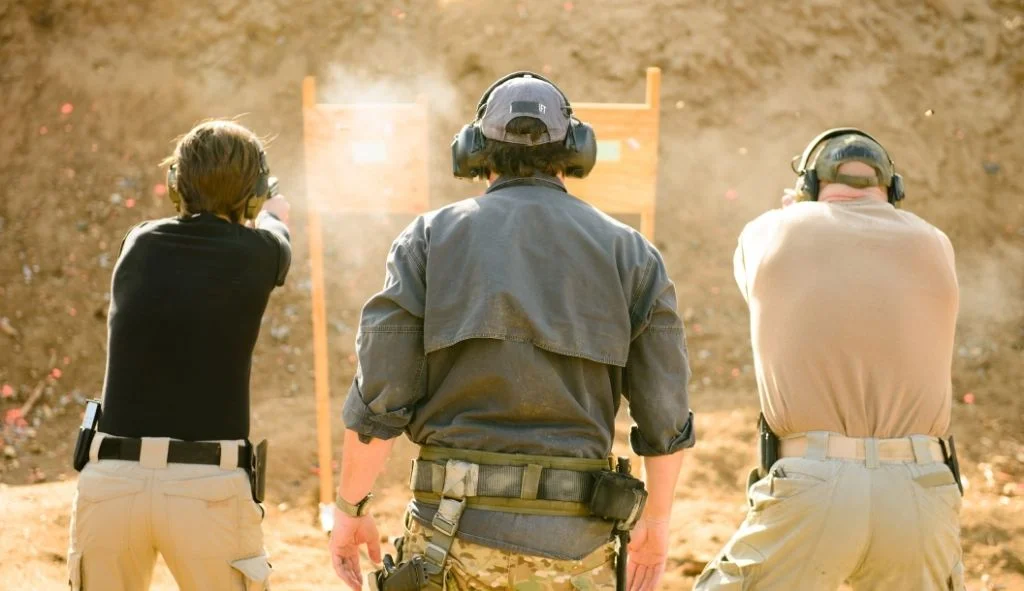
Dressing for Different Range Environments
Indoor Range Attire
When shooting at an indoor range, temperature control is less of a concern. Focus on protective clothing that covers as much skin as possible. A long-sleeved shirt, long pants, and closed-toe shoes are standard. The controlled environment of an indoor range allows for more consistent clothing choices year-round.
Outdoor Range Clothing
Outdoor ranges require more consideration of weather conditions. In warm weather, lightweight, breathable fabrics that still provide full coverage are ideal. In colder conditions, layering becomes important. Start with a moisture-wicking base layer, add insulating mid-layers, and top with a weather-resistant outer layer if needed. Always prioritize safety and coverage over comfort in extreme temperatures.
Special Considerations for Women’s Range Attire
Women should follow the same general guidelines for range attire, with a few additional considerations:
- Sports bras or supportive undergarments can provide extra comfort during recoil.
- High-necked tops are particularly important to prevent brass from falling into cleavage.
- Well-fitting pants or tactical pants designed for women can offer better mobility and comfort.
What Not to Wear to a Shooting Range
Certain clothing items should be avoided at the range for safety reasons:
- Open-toed shoes or high heels
- Shorts or skirts
- Low-cut or loose-necked shirts
- Tank tops or sleeveless shirts
- Loose or flowing clothing that could get caught in equipment
- Jewelry that might interfere with handling firearms
Accessories for Enhanced Comfort and Safety
Gloves
Shooting gloves can provide extra grip and protect your hands from heat and recoil. They’re especially useful for extended shooting sessions or when using firearms with aggressive textures.
Belt
A sturdy belt is important if you plan to practice drawing from a holster. It provides a stable platform for your holster and any additional gear you might carry.
Range Bag
While not clothing, a dedicated range bag is useful for carrying all your gear, including eye and ear protection, ammunition, targets, and any tools you might need.
Dressing for Different Shooting Disciplines
Competitive Shooting Attire
Competitive shooters often have specific clothing requirements based on their discipline. These might include:
- Shooting jackets for rifle competitions
- Specialized shoes for stability in certain events
- Customized eye and ear protection
Tactical Training Gear
For those engaging in tactical training, clothing choices might include:
- Tactical pants with multiple pockets for equipment
- Moisture-wicking base layers for comfort during physical activity
- Durable boots for stability and protection
Seasonal Considerations for Range Attire
Summer Range Wear
In hot weather, balance protection with comfort:
- Lightweight, breathable long-sleeved shirts
- Moisture-wicking fabrics to manage sweat
- Light-colored clothing to reflect heat
- Wide-brimmed hats for sun protection
Winter Range Attire
Cold weather requires additional layers:
- Thermal base layers for insulation
- Fleece mid-layers for warmth
- Windproof and water-resistant outer layers
- Insulated gloves that allow for dexterity
Maintaining Your Range Clothing
Proper care of your range attire ensures its longevity and effectiveness:
- Wash clothes separately from regular laundry to avoid lead contamination
- Use a detergent designed to remove lead residue
- Inspect clothing regularly for wear and tear, especially in high-stress areas
- Replace items that show signs of significant wear to maintain protection
Dress Codes and Range Policies
Many ranges have specific dress codes or policies regarding attire. It’s important to check with the range before your visit to ensure compliance. Common dress code elements include:
- Requirement for collared shirts
- Prohibition of offensive graphics or text on clothing
- Specific rules about acceptable footwear
- Regulations on the type of eye and ear protection allowed
Choosing the Right Fabrics for Range Wear
The materials you choose for your range clothing can impact your comfort and safety:
- Cotton: Comfortable but retains moisture and can be flammable
- Synthetic blends: Offer moisture-wicking properties and durability
- Flame-resistant fabrics: Provide an extra layer of protection for certain shooting activities
- Ripstop materials: Resist tearing and can prevent small holes from becoming larger
Adapting Your Everyday Wear for Range Use
For casual shooters who don’t want to invest in specialized range wear, adapting everyday clothing is possible:
- Choose jeans or work pants instead of dress slacks
- Opt for button-up shirts or polos with a high neckline
- Wear comfortable, closed-toe shoes you don’t mind getting dirty
- Add a hat and appropriate eye and ear protection to complete your range-ready outfit
The Importance of Proper Fit in Range Attire
Well-fitting clothes are crucial for both comfort and safety at the range:
- Shirts should allow full range of motion without being baggy
- Pants should fit well at the waist without requiring constant adjustment
- Shoes should be snug but not tight, allowing for stable footing
- Eye and ear protection should fit securely without gaps or pressure points
Integrating Concealed Carry into Range Attire
For those who use the range to practice concealed carry, clothing choices become even more important:
- Choose shirts that can effectively conceal your firearm without printing
- Wear pants that accommodate your holster comfortably
- Consider using a sturdy gun belt designed for concealed carry
- Practice with the same type of clothing you wear in everyday life for realistic training
Budget-Friendly Range Wear Options
Creating a suitable range outfit doesn’t have to be expensive:
- Utilize existing clothing that meets safety requirements
- Look for sales on outdoor or workwear clothing
- Consider second-hand stores for durable work shirts and pants
- Invest in quality eye and ear protection, even if other clothing items are budget-friendly
The Role of Comfort in Range Performance
While safety is paramount, comfort plays a significant role in your shooting performance:
- Comfortable clothing allows for better focus on shooting techniques
- Well-fitting attire reduces distractions and fidgeting
- Appropriate fabrics help manage body temperature, preventing discomfort from affecting your aim
- Properly fitted eye and ear protection prevent fatigue during long shooting sessions
Frequently Asked Questions
Can I wear shorts to a shooting range?
While some outdoor ranges may allow shorts in hot weather, it’s generally not recommended. Long pants provide better protection from hot brass and other range hazards.
Do I need special shoes for the shooting range?
Specialized shooting shoes aren’t necessary for most shooters. Any closed-toe, comfortable shoes with good traction are suitable for range use.
Is it okay to wear jewelry at the range?
It’s best to minimize jewelry when shooting. Rings, bracelets, and necklaces can interfere with safe firearm handling and may be damaged by recoil or ejected brass.
How often should I replace my range clothing?
Replace range clothing when it shows signs of significant wear, such as thin spots, holes, or frayed edges. Regularly inspect your gear to ensure it continues to provide adequate protection.
Can I wear contact lenses instead of safety glasses?
While contact lenses provide vision correction, they don’t offer protection from debris or potential ricochets. Always wear proper safety glasses over your contact lenses when at the range.
